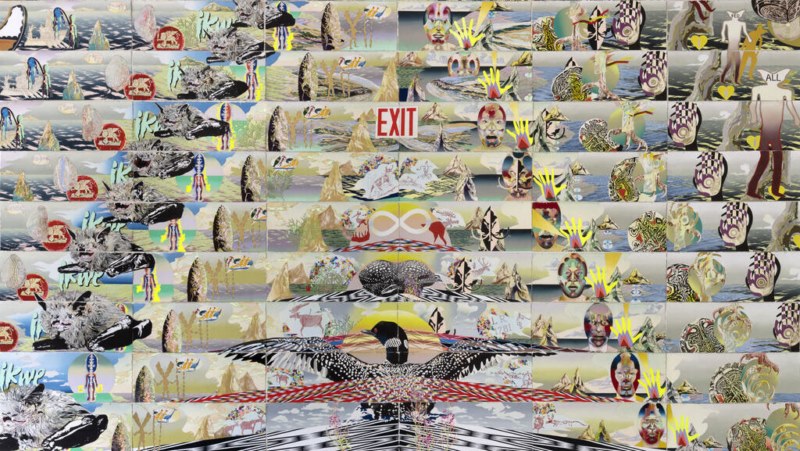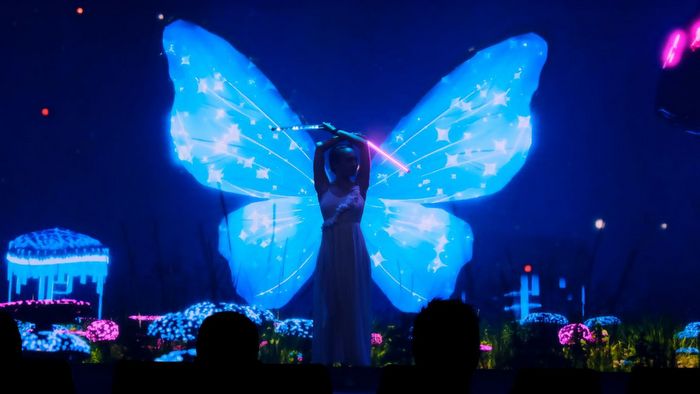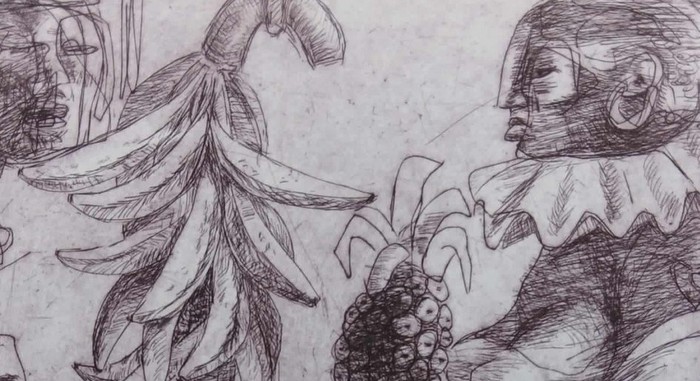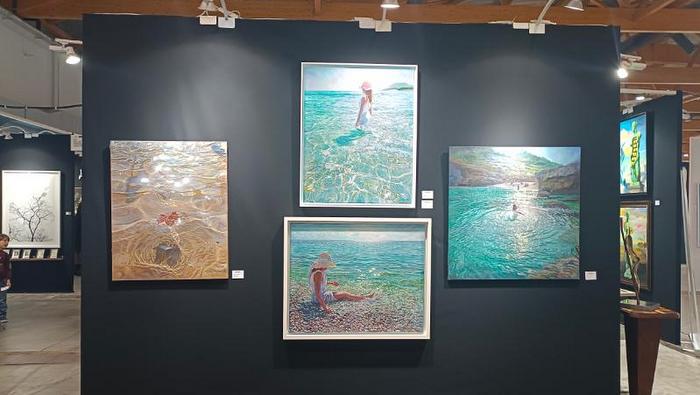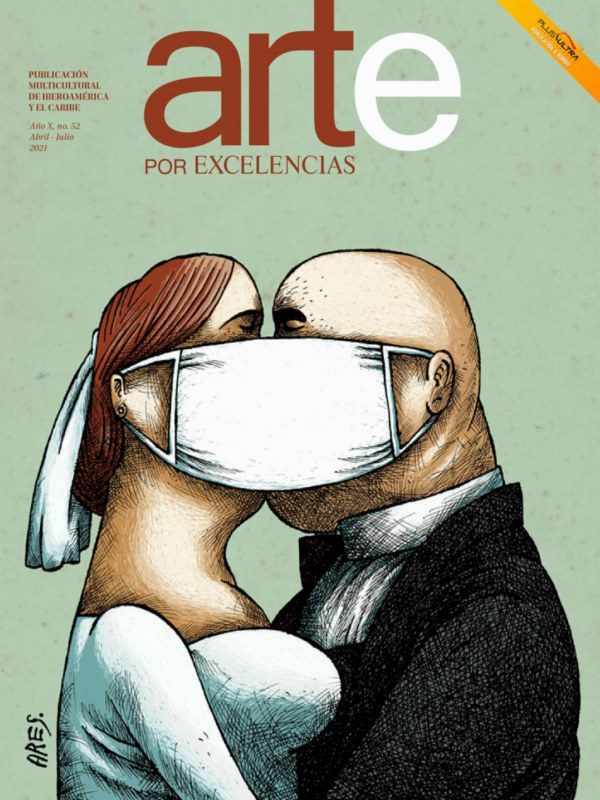A new work by Andrea Carlson (b. 1979, Grand Portage Ojibwe) will be the next project in a series of public art installations presented by the Whitney Museum and High Line Art on the facade of 95 Horatio Street.
Red Exit (2020)—an ambitious multi-part work on paper reproduced as a 17-by-29-foot vinyl print—will go on view on January 25 on the southwest corner of Gansevoort and Washington Streets, located directly across from the Whitney and the High Line.
Through painting and drawing, Carlson creates large-scale compositions with densely layered references that bring visibility to Native spaces and histories. In Red Exit, she presents a panoramic seascape informed by ideas of re-creation and renewal. Vibrant, prismatic motifs—some drawn from the land of the artist's ancestral home, and others from effigies, petroglyphs, and navigational signs—pulsate and collide across a series of horizons. The composition is anchored by a loon, known in the Ojibwe re-creation narrative as an Earth-Diver, who alongside other surviving animals, helps remake the world. Carlson also incorporates the infinity sign from the flag of the Métis People and the silhouetted figure of "Man Mound," a destroyed earthwork—fractured by a road—that appears here to rise up from the land. Through her images, which take shape as a continuous wake pattern, she invokes moments of resistance and empowerment. Symbols of Native advocacy come together in a gesture of reclamation, creating new narratives of Indigenous experience in North America. While Red Exit confronts the ongoing erasure of Indigenous cultures, it is, in the artist's words, a celebration of "the place we (Native People) reserve for ourselves . . . places of joy amidst removal, exclusion, and attempted assimilation."
Melinda Lang, senior curatorial assistant and organizer of the project, remarked, "Carlson's highly intricate images coalesce into disorienting scenes that often evoke futuristic and, at times, apocalyptic worlds. With its dizzying sense of movement, Red Exit yields and eludes legibility, playing up moments of visual confusion while inviting viewers to seek different vantage points as they take in the work—an experience that will be heightened through its presentation on the billboard."
"At this time when we are frequently kept apart, Carlson's engagement with public space raises so many compelling questions about belonging, landscape, and the boundaries between the public and private. These are concerns we all share, but they are concerns that Carlson and Indigenous artists have centered and foregrounded in their respective practices. As a museum located in Lenapehoking, the ancestral homeland of the Lenape, the Whitney is honored to live with Carlson's visualization of Indigenous histories and space," said David Breslin, Director of Curatorial Initiatives.
Andrea Carlson: Red Exit is part of a series of public art installations begun in 2015, organized by the Whitney Museum of American Art in partnership with TF Cornerstone and High Line Art, that has previously featured works by key American artists, including Alex Katz (2014), Michele Abeles (2015), Njideka Akunyili Crosby (2015–16), Torbjørn Rødland (2016–17), Puppies Puppies (2017), Do Ho Suh (2017–18), Christine Sun Kim (2018), Derek Fordjour (2018), Lucas Blalock (2019), and Jill Mulleady (2020).
The Whitney to Debut Public Artwork by Andrea Carlson on January 25

